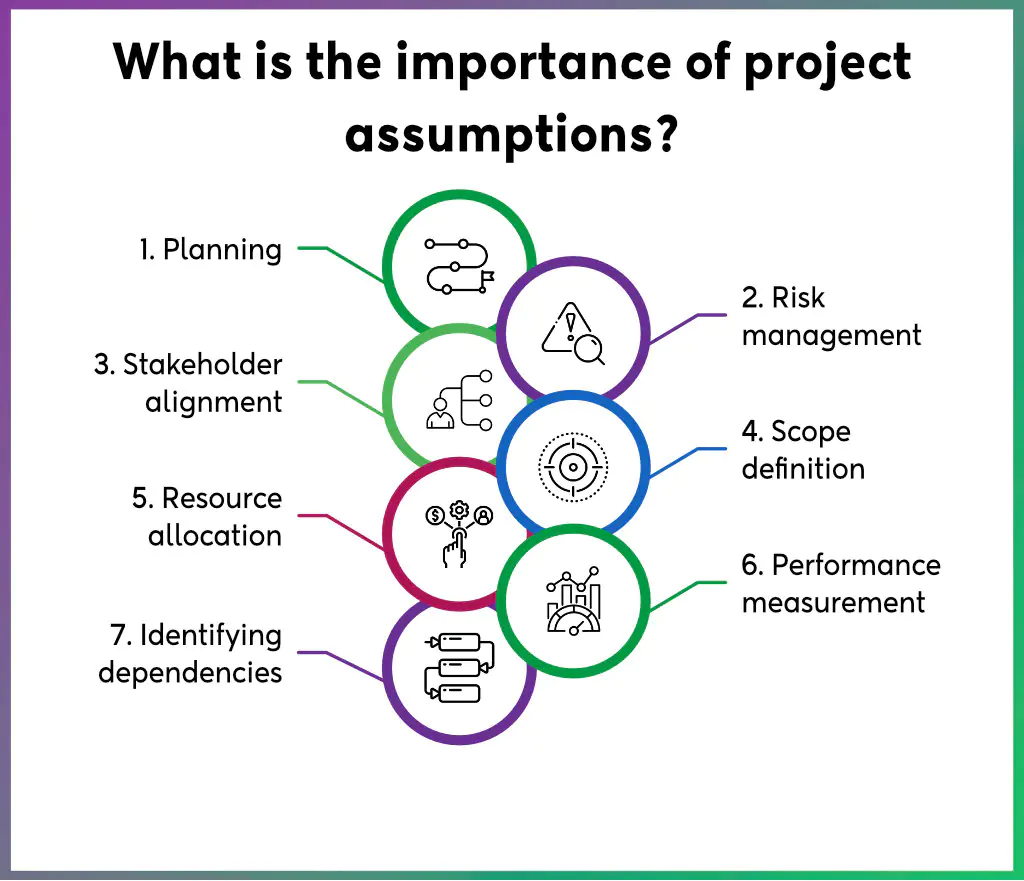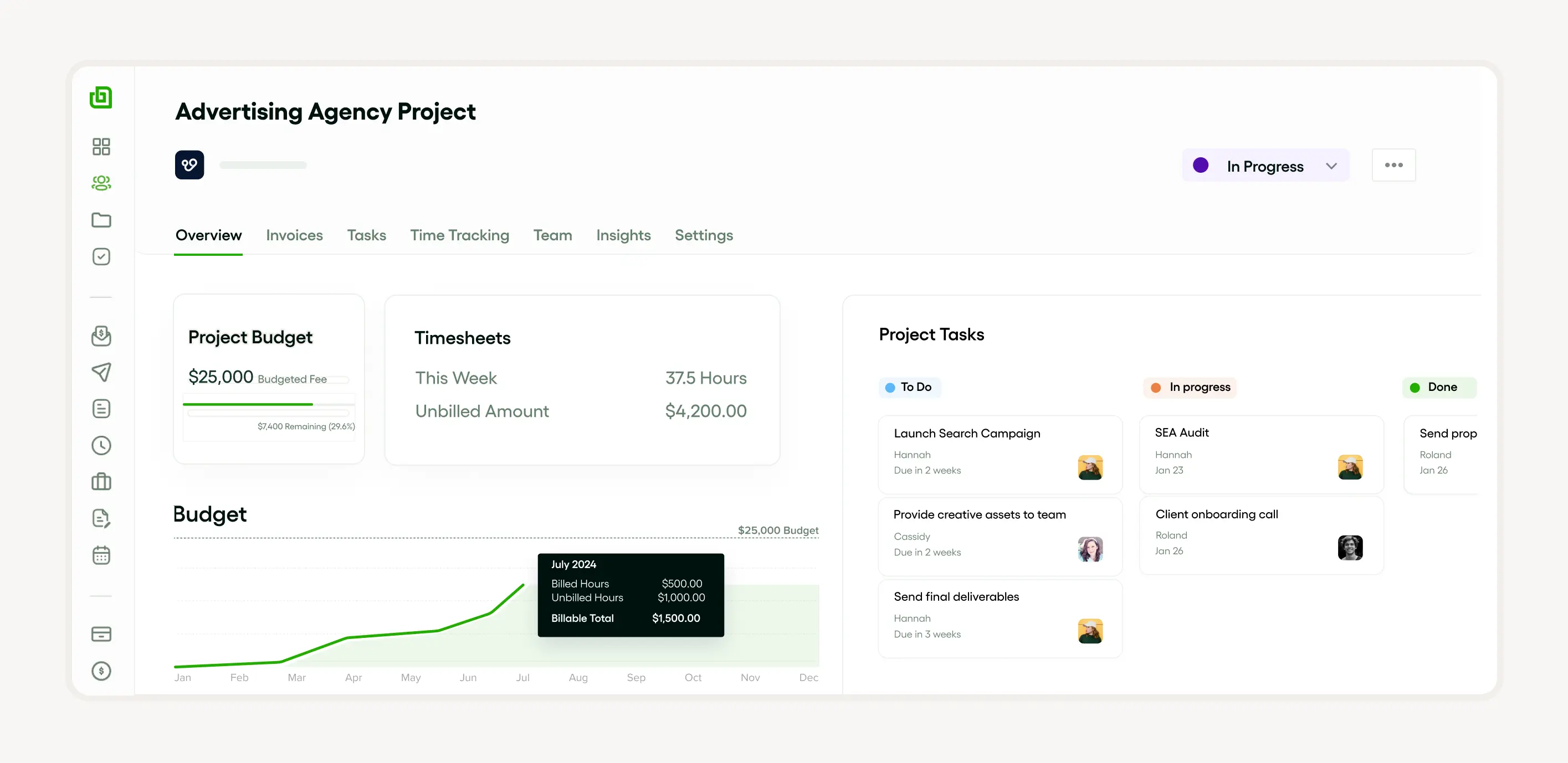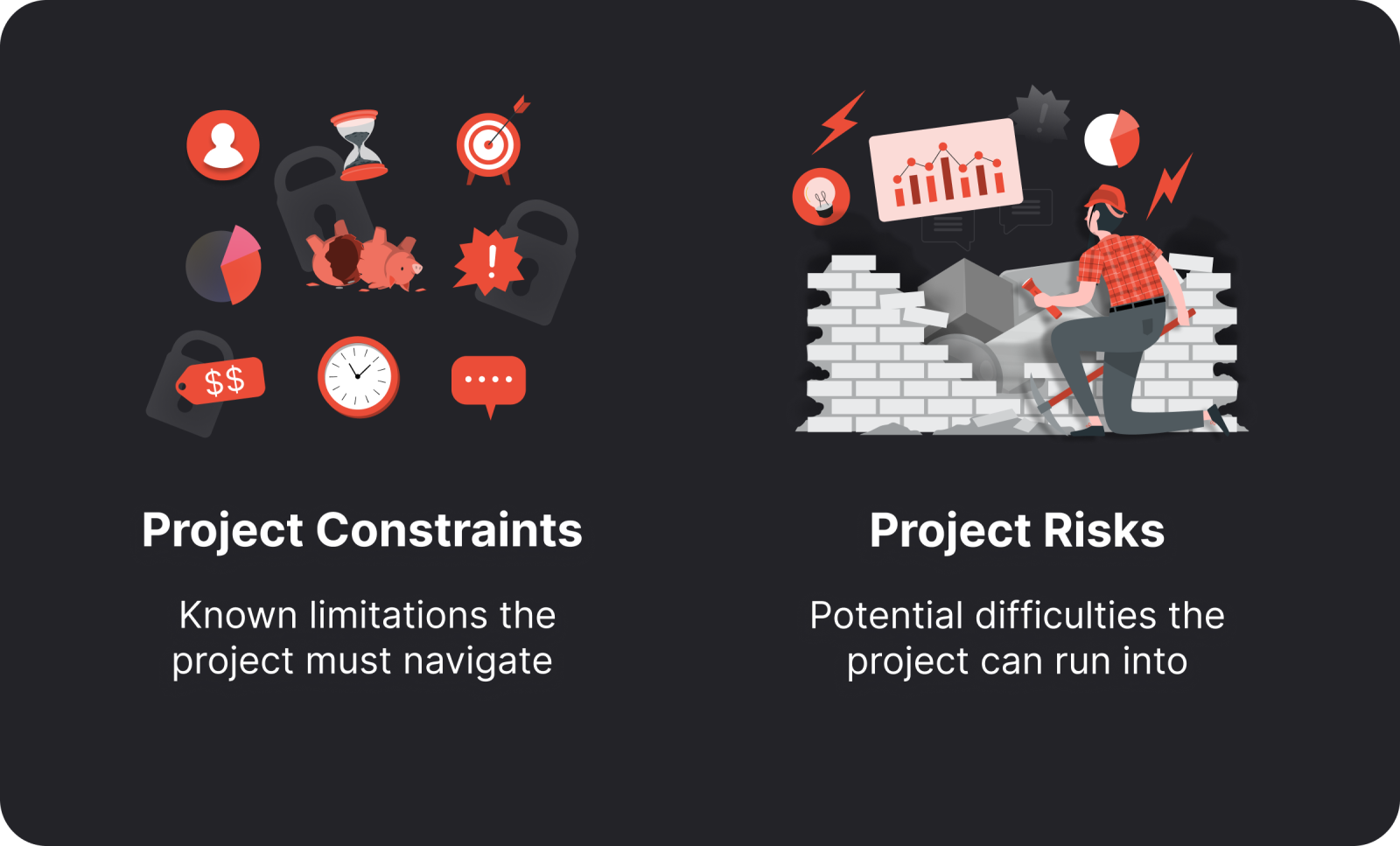Project assumptions play a vital role during project planning and execution phases. They establish project boundaries like schedule, budget, and highlight potential dependencies. Assumptions are also key in risk management, identifying risks early in the project initiation to adjust the management plan as needed. Ultimately, assumptions shape the project’s outcomes.
During project reviews, assumptions can either support or challenge the execution strategy. Regular reassessment of these assumptions ensures they stay relevant, keeping the project on course. In short, project assumptions significantly impact project success.
Introduction to project assumptions
Project assumptions often hold significant weight in planning and project execution stages. They map out risks and clarify dependencies. Assumptions are scenarios considered vital but remain unconfirmed.
However, they can introduce risks if proven incorrect. Thus, a management plan should include strategies to address such scenarios. This ensures project goals are met within budget, schedule, and timeline constraints.

Definition of project assumptions
Project assumptions are predictive statements assumed true during the planning phase. They lay the groundwork for execution, influencing the timeline and budget. These assumptions often involve constraints, dependencies, and acknowledged risks. Although integral throughout the project lifecycle, they need constant review to maintain progress toward deliverables.
Why project assumptions are important
Project assumptions are key in planning as they shape timelines and expectations. Managers make assumptions about constraints, dependencies, and deliverables based on experience and knowledge.
Any deviation from these assumptions can lead to risks, altering the schedule and overall execution. Therefore, proper risk strategies should accommodate potential changes, ensuring a streamlined initiation and review process.
How to manage project assumptions with Bonsai
Handling project assumptions can often feel overwhelming, but with Bonsai, it becomes much easier. Whether you're managing timelines, budgets, or deliverables, Bonsai assists you in keeping an eye on all those important l details that can determine the success of your project.
By recognizing, validating, and planning for your assumptions, you can make sure your project remains on course and operates efficiently.
Utilize tools to create workflows for task management, productivity, and teamwork to better understand your assumptions and develop a contingency plan for potential risks. Bonsai can serve as an effective project management tool, allowing you to create workflows, enhance productivity, and improve collaboration.

This approach will enable you to identify how project assumptions might adversely affect your project's completion and help you proactively steer clear of those issues.With Bonsai, you gain a visual overview of your project along with all the necessary tools to manage it in one location.
This simplifies the process of monitoring the overall health of a project and its integrated assumptions, as everyone has access to the same data and workflows.
Types of project assumptions
Project assumptions cover various expectations made during planning that affect the lifecycle, budget, and schedule. They may concern resource availability, stakeholder cooperation, or technology efficiency. If incorrect, they can introduce significant risks.
Constraints typically involve limits within which the project must operate, such as deadlines or financial resources. Misjudged assumptions about these constraints can derail the project.
Dependencies are variables that the project relies on, such as completing prior tasks or securing materials. Misjudging these can disrupt risk management and impede deliverables.
Business assumptions
At the core of successful projects is structured planning and management. This involves making assumptions, understanding risks, and managing constraints. These provide the framework for execution and are critical in preventing disruptions.
Moreover, effective management plans require realistic timelines and budgets. It involves recognizing dependencies that might impact the schedule.
The initiation phase also emphasizes risk management and deliverables, as these influence the review phase after project completion.
Technical assumptions
Project planning often includes a set of agreed-upon assumptions guiding direction. These range from studying dependencies to predicting risks. Both positives and negatives must be considered, as incorrect assumptions can jeopardize execution.
Handling assumptions involves careful evaluation of potential risks and constraints. Failure to accurately assess risks can lead to unforeseen issues.
Understanding these assumptions is key to crafting a clear and effective management plan. It prevents underestimating budgets and schedules, ensuring smooth delivery.
Environmental assumptions
Managing a project successfully often involves assumptions made during initiation and planning about budgets, timelines, and risks. These assumptions, based on prior knowledge or experience, influence the management plan, especially in risk and scheduling.
Unexpected circumstances can challenge these assumptions, introducing constraints that impact deliverables or execution. Regular reviews are essential to manage changes in assumptions effectively.
Understanding the relationship between dependencies and constraints is vital for regulating schedules and maintaining budgets, contributing to effective planning.
Identifying and documenting project assumptions
Project constraints and assumptions inform planning and execution, forming a foundational part of the management plan. They address potential risks, constraints, and dependencies throughout the lifecycle. These assumptions aid in defining the budget, timeline, and setting a realistic schedule.
Identifying and documenting these assumptions during initiation is crucial for developing effective risk strategies. The review process includes reassessing these assumptions to align with deliverables. This iterative approach keeps assumptions valid, preventing potential issues.

Steps to identify project assumptions
Identifying assumptions begins at the initiation stage. Break down the process into planning, execution, and review. During planning, focus on expected deliverables, budget, and schedule. List assumptions related to these.
In execution, assumptions often concern constraints and dependencies. Keep these in mind throughout the lifecycle. During review, identify risks that were assumed and not fully addressed. This process enhances risk management for future projects.
How to document project assumptions
Project assumptions are a critical part of the management plan, needing proper documentation. They address uncertainty in execution and are integral to risk management. Assumptions reference dependencies, risks, and constraints that may impact the schedule, budget, or deliverables.
It's vital to document these assumptions during initiation and review them throughout the lifecycle. This includes assumptions about resource availability, stakeholder engagement, and market conditions. Regular reviews and updates should be part of the ongoing planning process.
Role of project management tools in documenting assumptions
Management tools play a key role in documenting assumptions, aiding the execution phase and enhancing risk management. They allow tracking of assumptions and linking identified risks, reducing the chance of overlooking important aspects.

These tools improve planning accuracy by clarifying dependencies and assumptions early in initiation or review, potentially saving budget and ensuring an accurate timeline.
Moreover, tools often integrate assumptions into the schedule, helping align deliverables and constraints on time. Consistent monitoring and documentation of assumptions lead to better decisions and greater project success.
Managing project assumptions
Managing project assumptions is a key part of project planning. It involves identifying potential risks and mapping dependencies. This process helps in crafting a comprehensive management plan that accounts for possible constraints. Assumptions need to be monitored and reviewed throughout the project lifecycle. Regular updates to the schedule and budget are part of this process. Timely execution and delivery hinge on effectively managing these assumptions.
Monitoring and controlling assumptions
Monitoring and controlling assumptions is vital for successful management. This involves regular reviews to update assumptions, addressing risks and constraints as they arise. Assumptions are a crucial part of the overall plan and play a pivotal role in planning and execution. Changes in assumptions often occur due to shifts in the schedule, budget, or deliverables. Effective management is required to mitigate the impact of these changes. Regular reviews help keep everything on track.
Role of project managers in managing assumptions
Project managers are key to managing assumptions throughout the lifecycle. By defining deliverables, they strive to limit risks. They outline the execution roadmap by identifying and analyzing assumptions during the initiation phase, ensuring effective planning. This includes embedding assumptions in the plan, allowing for flexibility in the budget and timeline. Managers constantly review these assumptions for potential changes, keeping the schedule on course.
Impact of project assumptions on project risk
Assumptions can greatly influence risks. Assumptions made during planning might turn into constraints that affect the timeline and budget, leading to unexpected challenges. Risks are inevitable, and assumptions can either increase or decrease these risks. A thorough review and a strong management strategy informed by these assumptions are critical for success. Ensuring that assumptions are realistic can significantly reduce risks and ensure smooth delivery.
How assumptions influence project risks
Assumptions have a major impact on risks. During initiation and planning, assumptions are made to streamline execution. However, if these assumptions are incorrect, they can greatly affect the timeline and budget, leading to significant risks. Due to constraints and dependencies, making assumptions is necessary. Yet, inaccuracies in assumptions can mislead the plan, causing delays and escalating costs. To mitigate these risks, thorough reviews throughout the lifecycle are indispensable.
Managing risks associated with assumptions
In project management, assumptions play a role in planning and execution. However, these assumptions also bring risks that may impact the timeline and budget. It's crucial to anticipate and manage these risks efficiently through strategies during the lifecycle. Dependencies and constraints should be thoroughly reviewed during initiation. Changes should be updated in the plan to ensure deliverables are achieved as planned.

Case examples of project assumptions
Assumptions are made at the start of a project, accounting for elements expected to remain constant throughout the lifecycle. For example, assumptions might include the budget being sufficient or the timeline allowing for all necessary work to be completed. However, assumptions can lead to risks. If an assumed constraint, like a key team member's availability, changes, it could delay the schedule. Dependencies, like requiring external approval, also often form part of assumptions. Management measures should be in place to respond to these potential risks.
Project assumptions in Agile methodology
In Agile methodology, assumptions play a role in shaping planning and execution. These assumptions, whether related to the budget, timeline, or schedule, are essentially hypotheses accepted as truth for moving forward. However, assumptions introduce risks as they might not always hold true.
In Agile, these assumptions are constantly revisited and tested throughout review and execution phases. This helps in managing risks and mitigating dependencies and constraints. Understanding assumptions in Agile is vital for creating an accurate and effective plan.
Project assumptions in Waterfall methodology
In Waterfall methodology, various assumptions are made during the planning phase. Risks, constraints, and dependencies are identified and analyzed. Pre-assumptions include adherence to the schedule, budget, and timeline as planned. Execution in this methodology strictly follows the lifecycle, including phases like initiation, review, and deliverables. Detailed planning is vital to anticipate and mitigate potential risks through effective strategies. The clear demarcation of phases demands accurate insights and assumptions to ensure effectiveness.
Conclusion: The power of assumptions in project management
Assumptions play a pivotal role in project management, guiding planning, execution, and review according to predefined criteria. They help maintain the timeline and budget by minimizing risks and managing constraints and dependencies. Appropriate identification and action on assumptions can influence the lifecycle and ensure the timely delivery of deliverables. The overall impact of these assumptions underscores their power in the management plan.
Assumptions are key to successful planning and execution. If assumptions turn out to be incorrect, they can contribute to risks. Understanding dependencies is important within the lifecycle as it helps in developing a realistic schedule and budget. Risk management involves planning for potential constraints. It starts during initiation and is maintained throughout to ensure deliverables are met. Regular reviews are vital to verify that assumptions still hold true and adjust the plan if necessary.
Technologically integrated management plans will display real-time schedules, budgets, and timelines as part of ongoing execution. In the coming years, strategies will be baked into the initial initiation phase itself, ensuring a more effective lifecycle. This modern approach will enhance deliverable quality and make review processes more efficient and actionable.







